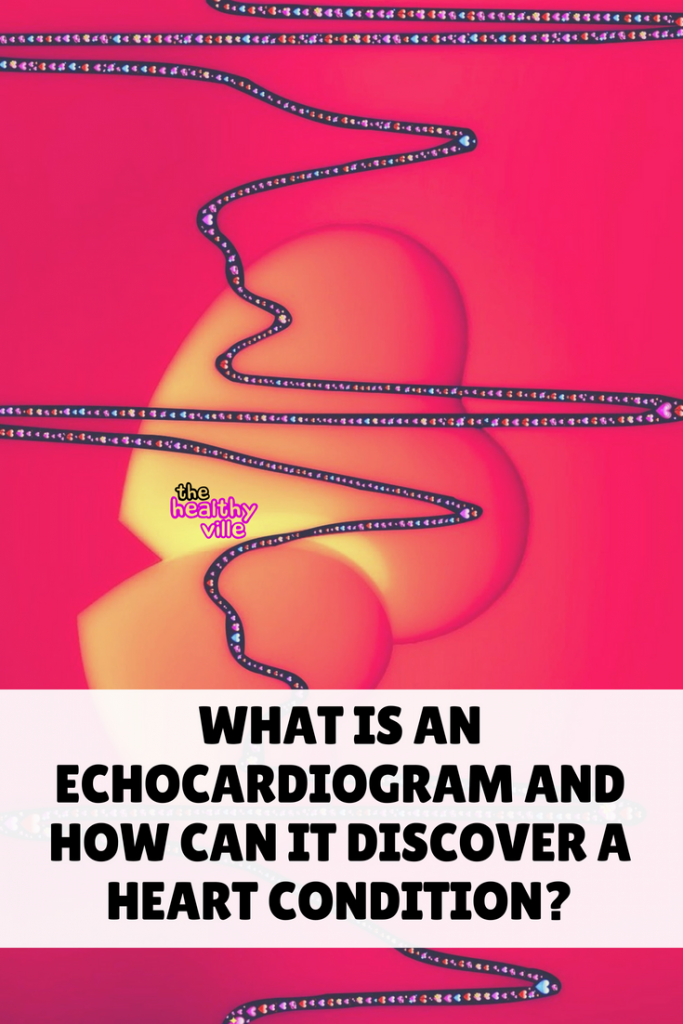Echocardiogram is one of the most used medical tests, it is used for the diagnosis and monitoring of a large number of cardiovascular diseases.
What is an echocardiogram?
The echocardiogram is a medical test that uses ultrasound to obtain images of the structure of the heart.
The echocardiogram is one of the most used diagnostic tests. It uses ultrasound emitted through the chest, which will bounce when reaching the internal structures and will allow to reconstitute an image of them.
Currently, an echocardiogram can obtain 2D images, three-dimensional images or even real-time images of heart function. The echocardiogram can provide a large amount of information about the shape, size and functioning of this organ.
Types of echocardiograms
Transthoracic echocardiography
It is the most used type of echocardiogram. It uses a transducer (ultrasound emitter and receiver) that will be placed on the person’s bare chest and move through the thorax and upper abdomen.
In this type of echocardiogram doctors can visualize the heart through the intercostal spaces. Occasionally, the lungs or ribs may interfere with the imaging of the heart. In this type of cases, a liquid that is administered intravenously, called contrast, is usually used to identify and visualize the organ more clearly.
Transesophageal echocardiography (TEE)
This type of invasive ultrasound is used only in particular cases in which a clearer or more defined image of the heart is sought. In the TEE doctors introduce the transducer through a probe through the esophagus. To avoid discomfort, they anesthetize the upper part of the throat.
The possible complications of this type of technique are related to the drugs used as anesthetics or to the problems derived from the introduction of the probe. Although TEE is currently in disuse, there are still some cases in which it may be useful, as in the detection of cardiac emboli or aortic dissections.
Stress echocardiography
This type of echocardiography is actually a variant of the TEE. It is performed after having subjected the patient to stress or physical exertion. The test consists in comparing the movements of the cardiac walls before and after having carried out a physical effort.
Stress doctors use echocardiography for the diagnosis, prognosis and follow-up of myocardial ischemia. Ischemia occurs when an artery becomes obstructed, preventing the arrival of enough blood to the heart, which can cause a myocardial infarction.
As for the method of generating cardiac stress, this can be physical, by performing physical activities such as riding a static bicycle. Or, it can be pharmacological, through the use of medications that increase the heart rate.
Clinical applications
The echocardiogram is one of the most used diagnostic tests. In fact, it can provide a large amount of information about cardiac function. Some of the parameters that can doctors can evaluate thanks to an echocardiography are the pumping force, the thickness of the walls or the functioning of the cardiac valves of the heart.
Also, doctors usually use the echocardiogram to detect some heart conditions such as:
Heart failure. By means of an echocardiogram, doctors can measure the pressure of the blood flow. In this way, they can diagnose heart failure. This is the condition in which the heart does not pump blood with sufficient force.
Further info: Prevent Liver And Heart Failure By Eating These Seeds
Cardiomyopathies. This type of pathologies affect the cardiac muscle, which may be hypertrophied, dilated or thickened. The echocardiogram can detect them since it offers an image of the cardiac walls.
Valvulopathies are the conditions that affect the proper functioning or structure of the heart valves. These alterations can cause that these valves do not open or close properly. Consequently, they can cause variations in heart rate such as heart murmurs.
Congenital heart disease. An echocardiogram can reveal several cardiac malformations, by showing a clear image of the structure of the heart. This is also very useful in the early diagnosis of heart disease in newborns.
Emboli. When there are emboli, caused by a thrombus or blood clot, it is very common to perform echocardiograms to determine if the origin is cardiac.
Endocarditis. It is an infection in the heart valves. Doctors observe this through an echocardiogram when visualizing the presence of abnormal tissue or warts in the valves, which can hinder the correct blood flow.
Don’t forget to SHARE what is echocardiogram and how much it can help detecting heart problems with your friends and family on your social networks!

